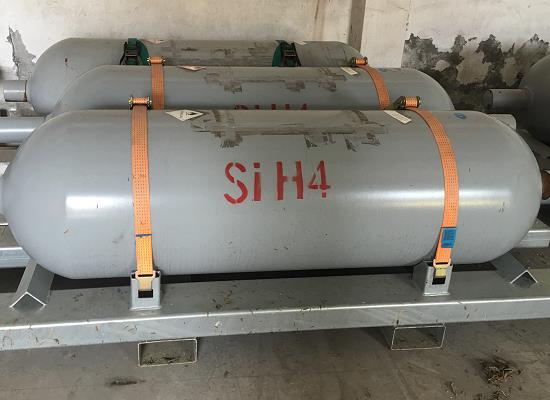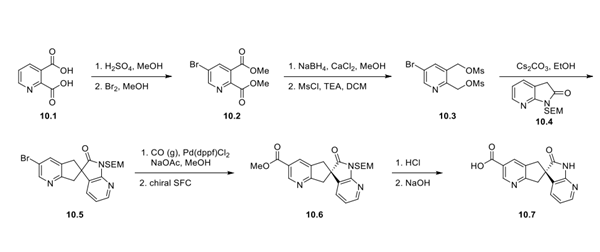Silicon Tetrahydride: Properties, Applications in Dental Restorative Materials, and Safety Hazards
General Description
Silicon tetrahydride is a colorless, flammable, and poisonous gas with distinct properties. It is highly reactive, has a repulsive odor, and is lighter than air. Silicon tetrahydride is primarily used in the production of amorphous silicon and is considered a fundamental compound in silicon chemistry. In the context of dental restorative materials, silane has been utilized in plasma-enhanced chemical vapor deposition (PECVD) to enhance the bonding between high-translucency zirconia and composite cement. Longer deposition times with silane resulted in increased silicon content on the zirconia surface, improving bond strength. However, excessive penetration caused stress concentrations. Silicon tetrahydride poses significant safety risks, including flammability, explosiveness, and toxicity. Proper precautions must be taken when handling this hazardous substance.

Figure 1. Silicon tetrahydride
Distinctive Properties
Silicon tetrahydride is a colorless, flammable, and poisonous gas that possesses several distinctive properties. It has a strong repulsive odor and is easily ignited in air. Silicon tetrahydride also reacts with oxidizing agents, making it highly reactive. Inhalation of silane is extremely toxic, and it can cause severe irritation to the skin, eyes, and mucous membranes. One notable characteristic of silane is its lighter-than-air nature. This property means that silane will rise and disperse in the atmosphere. However, it is important to note that under prolonged exposure to fire or heat, containers containing silane may rupture violently and propel like rockets. Silicon tetrahydride is primarily used in the production of amorphous silicon, which is widely utilized in various technological applications. It is the simplest form of silane, consisting of a single silicon atom carrying four hydrogen atoms. As a member of silanes and a mononuclear parent hydride, silane is considered a fundamental compound in the field of silicon chemistry. Additionally, silane can be found naturally occurring in Curcuma longa, also known as turmeric, with available data on its properties. 1
Enhancing Bonding Between Zirconia and Composite Cement Using Silicon Tetrahydride
Silicon tetrahydride is a chemical that has been used in plasma-enhanced chemical vapor deposition (PECVD) to modify the surface of high-translucency zirconia (HT-zirconia) for bonding with composite cement. In this study, blocks of HT-zirconia were divided into five groups based on different PECVD times and were analyzed using various techniques, including X-ray diffraction, Fourier-transform infrared spectroscopy, energy dispersive spectroscopy, and x-ray photoelectron spectroscopy. The results showed that the longer the deposition time with Silicon tetrahydride, the greater the amount of silicon on the surface, which contributed to increased surface free energy and improved bond strength to composite cement. However, the silicon also penetrated the microstructure and caused higher stress concentrations. The PECVD technique with Silicon tetrahydride, combined with a primer treatment based on silane methacrylate, is a solely chemical surface treatment capable of maintaining bonding between composite cement and HT-zirconia. These findings suggest potential applications for Silicon tetrahydride in dental restorative materials and other industries that require strong bonding between ceramics and composites. 2
Safety Hazards
Silicon tetrahydride is a highly flammable gas that poses several safety hazards. It is classified as an extremely flammable gas and can easily ignite when exposed to heat, sparks, or flames. Silicon tetrahydride can also form explosive mixtures with air, and even react explosively in the absence of air. It may ignite spontaneously in air and can spread along the ground as vapors. The gas is toxic if inhaled at high concentrations and may cause dizziness or asphyxiation without warning. Contact with silane gas or liquefied gas can result in burns, severe injury, or frostbite. In addition to its flammability and toxicity, silane is a skin, eye, and respiratory irritant. It can cause irritation to the skin, eyes, and respiratory tract, and rapid evaporation of the liquid form may lead to frostbite. Silicon tetrahydride poses fire hazards such as explosions, and cylinders exposed to fire may release flammable gas through pressure relief devices. Containers of silane may explode when heated or rupture and rocket. Overall, silane presents significant safety risks due to its flammability, explosiveness, toxicity, and potential for causing burns and injuries. Proper precautions should be taken to ensure safe handling, storage, and use of this hazardous substance. 3
Reference
1. Silicon tetrahydride. National Center for Biotechnology Information (2024). PubChem Compound Summary for CID 23953.
2. Monteiro JB, Prado PHCO, Ribeiro Zucco G, et al. High-Translucency Zirconia Following Chemical Vapor Deposition with SiH4: Evidence of Surface Modifications and Improved Bonding. J Adhes Dent. 2023;25(1):1-12.
3. Silicon tetrahydride. European Chemicals Agency, EC / List no. 232-263-4.



